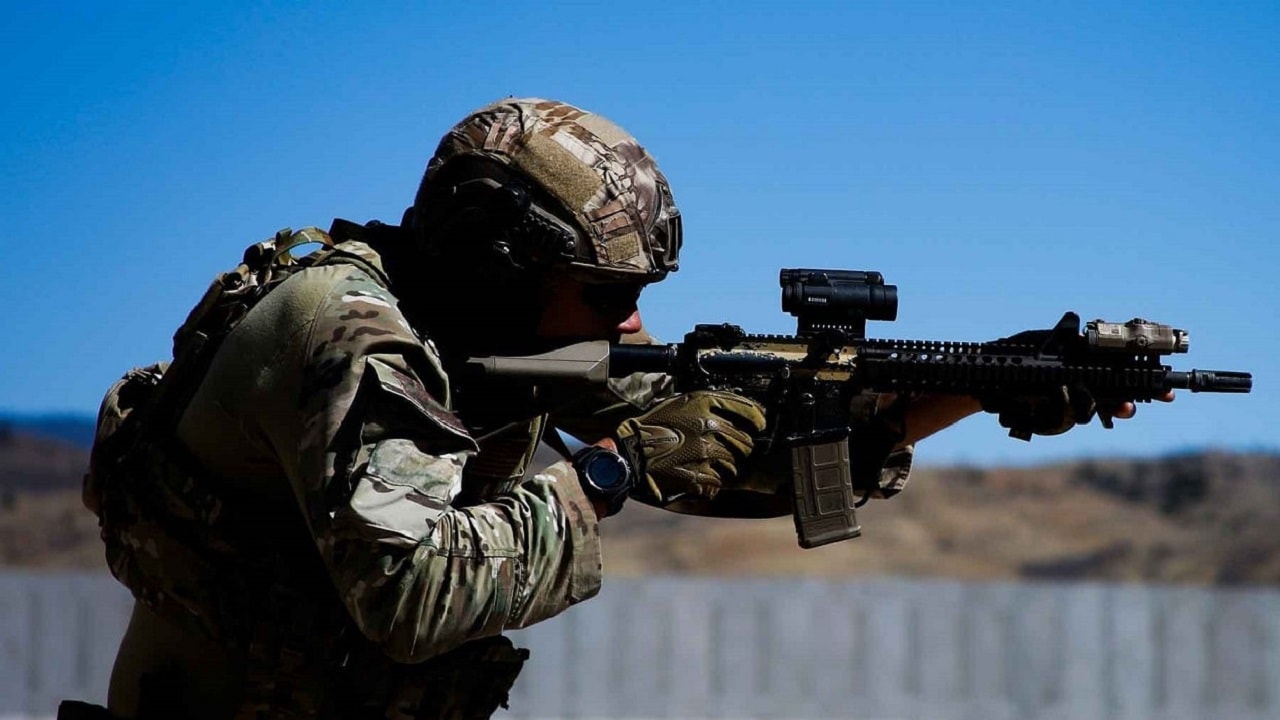Did American Green Berets Help Prepare Ukraine for Russian Invasion? – During Russia’s 2014 annexation of the Crimea, images circulated online that showed armed men who carried the same weapons as the Russian Army, used Russian military equipment, and spoke with Russian accents. They even were seen with Russian-made trucks with Russian number plates – yet according to Moscow, those individuals were part of a “self-defense group,” organized by locals who bought all their uniforms and equipment at military surplus stores.
Soon, media in both Russia and Ukraine began to refer to those soldiers as “Little Green Men,” a reference to the color of their uniforms and their unconfirmed origin. It likely was also meant to compare them to the largely nondescript toy soldiers (i.e. “Little Green Men”) that children play with around the world.
Now it seems another type of green men may have aided Ukraine prior to Russia’s unprovoked invasion last month. Following the 2014 annexation, the U.S. military stepped up to help train the Ukrainian military, and among the units deployed were the U.S. Army’s Special Forces – better known as Green Berets.
“Ukraine was taken very seriously by Special Forces,” retired Green Beret Sgt. Maj. Martin Moore told Fox News Digital earlier this week.
“They immediately set upon a great effort to protect Ukraine, to provide training,” Moore added. “There’s nobody better at training than Green Berets. These are people that can teach.”
Green Berets and other U.S. military personnel from the U.S. Special Operations Command Europe (SOCEUR) had been advising and training Ukrainian forces at the Yavoriv Combat Training Center in Western Ukrainian since 2014. While U.S. forces had already pulled out of the facility, its significance may have been noted by Moscow – as it came under a Russian rocket attack on March 13, in which 35 Ukrainians there were killed.
The Significance of Training
The U.S. Army’s Special Forces have conducted such training with U.S. allies and partners around the world, and have been a “force multiplier” that can help improve the combat capability of the international forces they train with. However, this isn’t about teaching the Ukrainians and others to conduct raids and ambushes, or how to conduct other covert operations.
Rather it is about best taking advantage of the location from where the force is operating. In this case, the training may have prepared the Ukrainians to counter Russia’s tanks, but also to cripple the enemy by taking out its command structure. To date Russia has seen hundreds of tanks destroyed, and it has lost at least a half a dozen general officers, while an even greater number of colonels have been killed.
Roughly 7,000 to 15,000 Russian troops have been killed in four weeks of fighting in Ukraine, a senior NATO military official said Wednesday.
Guerilla Warfare
Even if Russia were to be successful in overrunning the country, the Ukrainians have been trained to set up militia units that could wage guerilla warfare.
During the Cold War, NATO had created a network of clandestine, stay-behind units in many European countries. These consisted of troops tasked with conducting intelligence and reconnaissance operations, as well as guerrilla attacks, in the event of a Warsaw Pact invasion. Ukraine could have already instituted a similar plan, which could allow small units to further disrupt Russia’s troop movements.
While an insurgency plan could be rendered moot if Russia’s aim is to dismantle Ukraine’s military rather than occupy territory, so far, Moscow has seemed unable to do either. Possibly thanks to the training the Ukrainians have already received from the Green Berets and other special operators.
Now a Senior Editor for 1945, Peter Suciu is a Michigan-based writer who has contributed to more than four dozen magazines, newspapers and websites. He regularly writes about military hardware, and is the author of several books on military headgear including A Gallery of Military Headdress, which is available on Amazon.com. Peter is also a Contributing Writer for Forbes.

